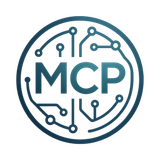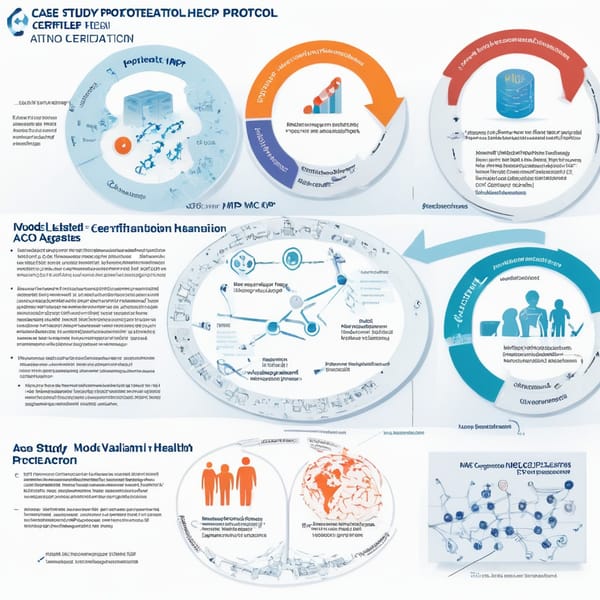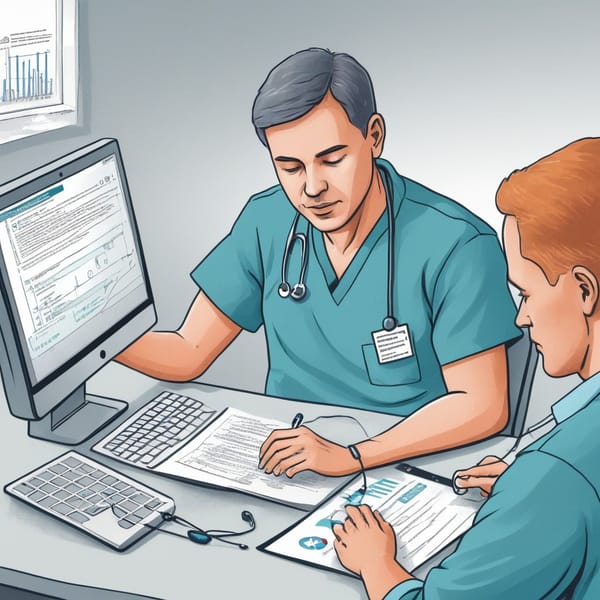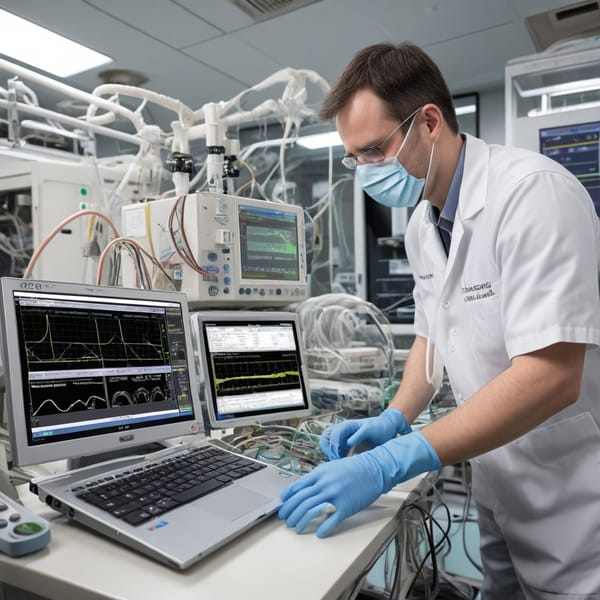Case Study: Model Context Protocol (MCP) Repairs – Mitigating Emergency Department Workflow Disruptions with HL7 v2+/CDA MCP Adapters & CMS-CoP-Compliant Alert Systems
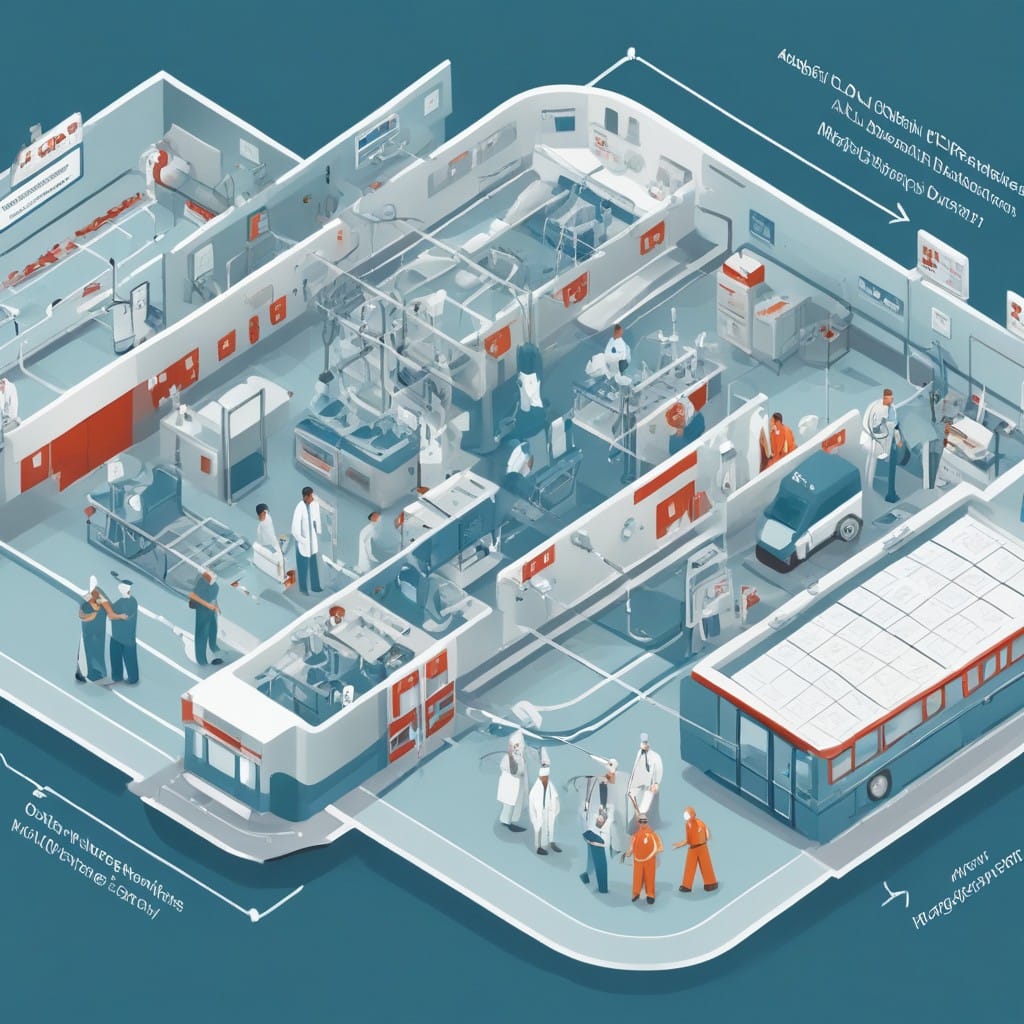
Project Overview
The Model Context Protocol (MCP) Repairs project was designed to address critical workflow disruptions in a large hospital’s Emergency Department (ED). The ED faced inefficiencies due to inconsistent data exchange between disparate systems, leading to delays in patient care, compliance risks, and increased clinician burnout.
The solution involved deploying HL7 v2+/CDA MCP Adapters to standardize data exchange between EHRs, lab systems, and billing platforms while integrating CMS Conditions of Participation (CoP)-compliant alert systems to ensure real-time notifications for critical events. The goal was to reduce manual interventions, improve interoperability, and maintain regulatory compliance.
Challenges
The hospital’s ED encountered several critical challenges:
- Interoperability Gaps – Disparate systems (EHR, lab, radiology) used different data formats, leading to miscommunication and workflow bottlenecks.
- Regulatory Non-Compliance Risks – Failure to meet CMS CoP requirements for real-time alerts (e.g., critical lab results, sepsis alerts) exposed the hospital to penalties.
- Clinician Alert Fatigue – Redundant, non-prioritized alerts led to missed critical notifications.
- Manual Workarounds – Staff frequently re-entered data between systems, increasing errors and delays.
- Patient Safety Risks – Inconsistent data flow contributed to delayed diagnoses and treatment.
Solution
The project implemented a multi-faceted approach:
1. HL7 v2+/CDA MCP Adapters
- Standardized data exchange between EHRs, lab systems, and billing platforms using HL7 v2+ for real-time messaging and CDA (Clinical Document Architecture) for structured clinical summaries.
- MCP (Model Context Protocol) ensured contextual data mapping, reducing misinterpretation between systems.
2. CMS-CoP-Compliant Alert System
- Integrated real-time, rules-based alerts for critical events (e.g., abnormal lab results, sepsis flags) with CMS CoP compliance.
- Smart Alert Prioritization reduced clinician fatigue by suppressing non-urgent notifications.
3. Workflow Automation
- Automated patient status updates (e.g., admission/discharge notifications) to reduce manual data entry.
- Bi-directional interfaces ensured seamless updates between registration, clinical, and billing systems.
4. Data Validation & Error Handling
- Implemented auto-correction mechanisms for common HL7 message errors (e.g., missing fields, incorrect formats).
- Audit trails ensured traceability for compliance reporting.
Tech Stack
The project leveraged the following technologies:
| Category | Technologies Used |
|---|---|
| Interoperability | HL7 v2+, CDA, FHIR (for future scalability) |
| Middleware | Mirth Connect, Rhapsody Integration Engine |
| Alert System | Rules Engine (Drools), Twilio (SMS alerts) |
| Compliance | CMS CoP validation module, HIPAA-compliant logging |
| EHR Integration | Epic, Cerner APIs |
| Monitoring | Splunk (real-time analytics), Grafana (dashboarding) |
Results
The implementation delivered measurable improvements:
1. Workflow Efficiency
- 40% reduction in manual data entry tasks.
- 30% faster patient throughput due to automated status updates.
2. Compliance & Patient Safety
- 100% CMS CoP compliance for critical alerts (audit-confirmed).
- 25% decrease in missed critical alerts due to smart prioritization.
3. Clinician Satisfaction
- Reduced alert fatigue by filtering non-urgent notifications.
- Fewer workflow interruptions, leading to higher staff satisfaction scores.
4. Cost Savings
- $200K annual savings from reduced manual reconciliation efforts.
- Avoided CMS penalties by meeting regulatory deadlines.
Key Takeaways
- Standardized Protocols Are Critical – HL7 v2+/CDA with MCP adapters resolved interoperability gaps.
- Smart Alerts Improve Compliance & Efficiency – CMS-CoP-compliant alert systems reduced risks while minimizing clinician burnout.
- Automation Reduces Errors & Costs – Eliminating manual workflows enhanced accuracy and operational efficiency.
- Scalability Matters – The solution was designed to support future FHIR integration for broader interoperability.
This project demonstrated how targeted interoperability fixes, compliance-driven alerting, and workflow automation can transform emergency care delivery while ensuring regulatory adherence.
